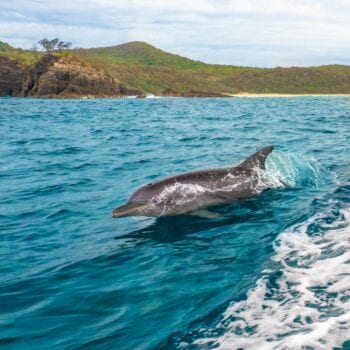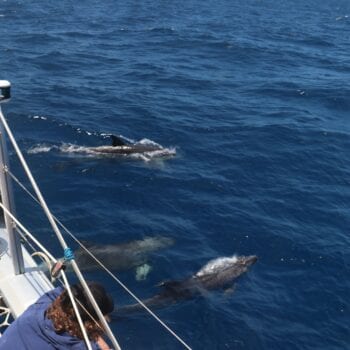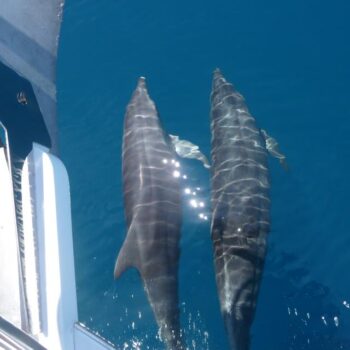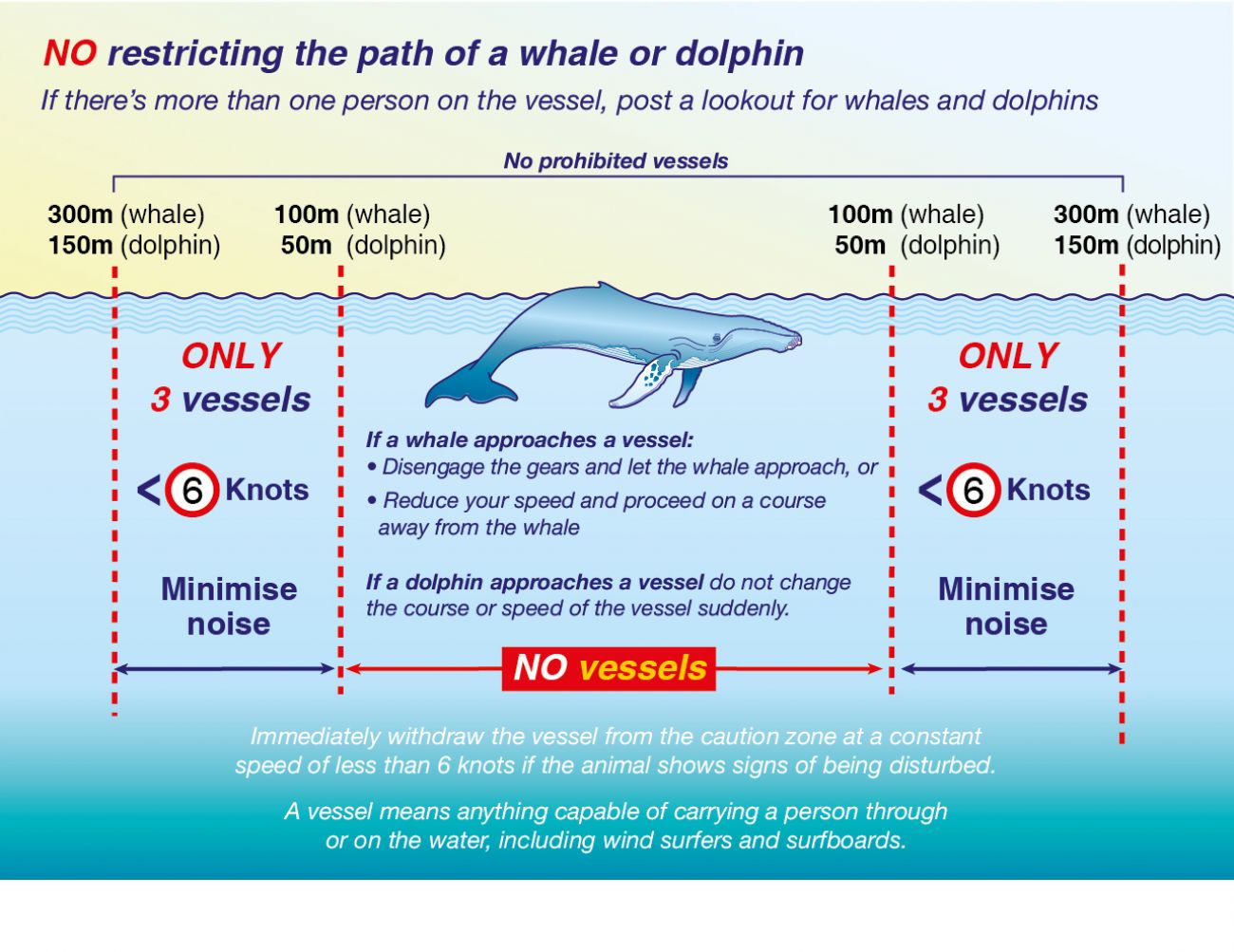Dolphins in the Whitsundays
With the Great Barrier Reef Marine Park being an aquatic playground for many types of marine life and coral species, the Whitsundays are also home to a number of dolphin species.
The most common, and arguably the most recognisable, of all dolphin species is the Bottlenose dolphin. These incredible mammals are a frequent sighting in the region all-year round and are easily identified by their size and shape.
It is a regular occurrence for visitors to the Whitsundays to witness dolphins casually swimming around the Whitsunday islands or playfully showing off their acrobatic skills around your boat!
Dolphins can be quite playful and are known to surf in the waves created by your boat. This is known as bow-riding or wake-riding. Dolphins will often leap in the air when bow- or wake-riding.
- Image: Tourism Events Queensland
At night, dolphins will hunt squid and other small fish. You will often get to experience this by utilising the underwater blue lights on your boat (if available) as they help attract marine life in the evening.
The other species of dolphin that may be seen around the Whitsundays are Spinner Dolphins, Indo-Pacific (Humpbacked) Dolphin and the Snubfin Dolphin.
Most dolphins live and hunt in small groups, and coastal species are often attached to a particular area.
When dolphins sleep they alternate between the left and right sides of their brain, allowing them to remain alert and keep breathing as they sleep.
They are known for their intelligence and have evolved complex communication abilities and examples of cultural practices that are passed on within groups.
Most breed in summer, and since they have a 12 month gestation period, they calve in summer too. Females give birth every 3-6 years.
The Great Barrier Reef Marina Park Authority advises the following:
When boating around dolphins
- Do not intentionally drive through a pod of dolphins to try to get them to bow-ride – some dolphins don’t bow ride, and can become disturbed near boats
- If you do come across dolphins bow riding, maintain a constant speed and direction.
When viewing whales and dolphins
- Never try to overtake whales or dolphins
- Avoid making sudden noise, speed or direction changes
- Be quiet when you are near a whale or dolphin
- Let the whale or dolphin control the situation – do not try to round up or herd
- Move away immediately if the whales or dolphins suddenly change behaviour and appear agitated. Behaviours that indicate that boats should move away include:
- Bumping the vessel
- Rapid changes in swimming direction or speed
- Erratic behaviour
- Escape behaviour such as prolonged deep dives
- Tail slapping or swishing.
Marine Parks Legal Requirements
- All whales and dolphins in the Great Barrier Reef Marine Park are legally protected
- When operating a vessel or aircraft check safe distances diagram (below).






